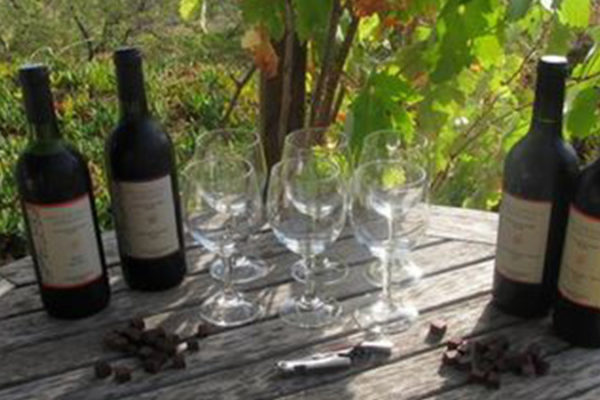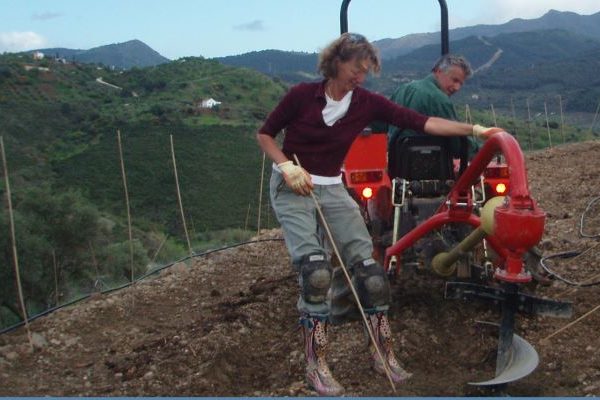Viña & Bodega Remsamen
History of viticulture
Previously, the area around Ojén was a prosperous wine region. However, at the end of the nineteenth century, that came to an end and the remains of the terraces in the landscape of this remains as a silent witness. In nearby Monda, Marjolijn Brouwer and Rene Mooijman started it again enthusiastically. They build their own bodega where they can receive guests for a tour in the vineyard.
Visit the vineyards
On request, it is possible to visit the vineyard, with a tour and a tasting. The cost for the visit is € 15 per person and it includes tasting of three wines accompanied by three small tapas.
La Posada can make your reservation.
Their own story
We, Marjolijn Brouwer and Rene Mooijman, began the challenge on a piece of land with olive and almond trees back in 2005. Vineyard in Spain: The idea was born in early 2001, and after searching in several countries, we eventually ended up in the south of Spain.
Viña & Bodega Remsamen is located in Monda, Málaga Province, Spain. A place in a valley in the Sierra de las Nieves, at an altitude of 350m and 15km from the Mediterranean Sea. In the Sierra de las Nieves there is a major environmental heritage, like the Parque Natural de la Sierra de las Nieves with rugged mountains and nature reserve with a rich history that goes far back in time.
The vineyard is situated on a slope and in the construction important preparations must be done, such as soil testing, making terraces, irrigation system construction, selection of the supplier of the vines, etc. The vines stand in long rows on the terraces.
We grow Chardonnay and let nature do its work. The sun, the rain, the wind, the temperature, the earth, etc. thus determine the flavour of the grapes. There are no artificial fertilizers, chemical pesticides, excipients or sulphite added during the making of the wine.
We filter the wine as much as possible to retain much of its taste. Therefore, there is a highly possibility to find some dregs in the bottle. Limited filtering has the effect that the wine in the glass is slightly less bright but as the wine stays longer in the bottle it gets more clear.
History
What hapened with the old grapes in this area
Historical records indicate that on the Iberian Peninsula by the Phoenicians or the Greeks, the vine was introduced, but it were the Romans who developed the viticulture further. Wine and raisins were brought to the coastal ports such as Málaga using the Roman road network. They were loaded onto ships and taken to Rome and other parts of the Empire.
In subsequent periods, including during the Islamic domination, despite the religious prohibitions, they remained produce wine. During the sixteenth century, at the time of the Moors, there came more and more vineyards on the outskirts of Monda, where production was exported through the ports of Málaga and Marbella to countries in Northern Europe. Then by the arrival of the Christian settlers, where wine consumption was associated with Western culinary culture, occurred in the mid-nineteenth century in the province of Málaga a strong growth in the number of vineyards.
At the end of the nineteenth century the viticulture heavily damaged by a succession of events. Very severe mildew, grasshoppers and lice had a devastating effect on the vineyards. The arrival of Phylloxera in Malaga from the United States then gave the final blow to the vines. The plant was completely razed to the ground and in just a few years the plant has completely disappeared from many parts of the province.
The plague was a major economic catastrophe, and although they tried to recover the viticulture in Malaga, attempts have not really led to success. The remains of the stone terraces on the agricultural landscapes were a silent witness to that period but many have been planted with olives and almonds over the years.

